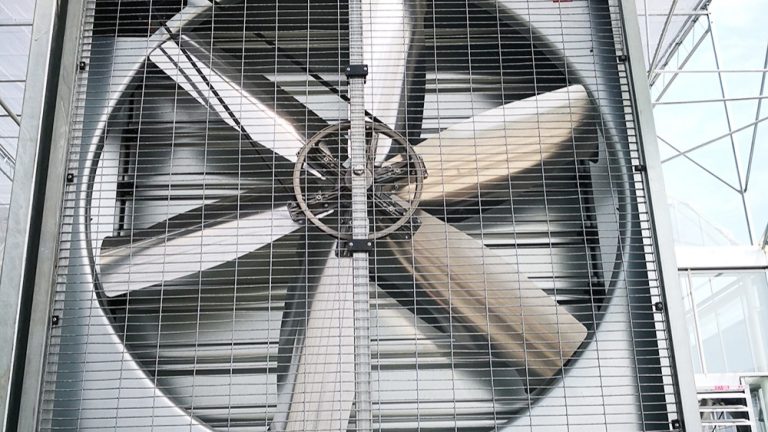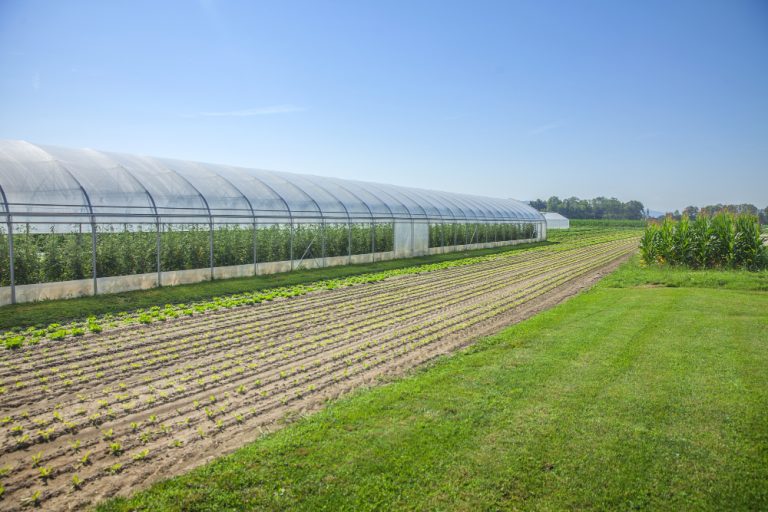
Benefits Overview
Protected cultivation offers farmers a way to grow crops in controlled environments, shielding them from weather and pests. This method, which includes nethouses, polyhouses, and greenhouses, can extend growing seasons and improve crop quality. Studies show, for example, tomato yields can increase by up to 192% in soilless systems within these structures compared to traditional methods. It also uses resources efficiently, like drip irrigation, saving water and reducing costs. Economically, farmers can earn more by growing off-season or high-value crops, and automation can lower labor needs. Plus, it’s more sustainable, cutting down on chemical use, which is good for the environment and consumer health.
Detailed Benefits by Category
- Protection from Adverse Conditions: Nethouses, for instance, are great at keeping insects away, while all types shield crops from rain, wind, and extreme temperatures.
- Controlled Environment: Farmers can manage temperature and humidity, allowing year-round production, especially in challenging climates.
- Economic and Efficiency Gains: Beyond higher yields, reduced labor through automation and quick recovery of initial investment (sometimes within two years) make it cost-effective.
Comprehensive Analysis of Protected Cultivation Benefits
This section provides an in-depth exploration of the benefits of protected cultivation, encompassing nethouses, polyhouses, and greenhouses, in farming. The analysis draws from various sources to ensure a thorough understanding, suitable for researchers, policymakers, and farmers seeking detailed insights.
Introduction to Protected Cultivation
Protected cultivation refers to the practice of growing crops in controlled environments using structures like nethouses, polyhouses, and greenhouses. These methods aim to optimize growth conditions, protect against external factors, and enhance productivity. Each type—nethouses for pest control, polyhouses for affordable climate management, and greenhouses for advanced environmental control—offers specific advantages, but they share common benefits that revolutionize modern farming.
Detailed Benefits by Category
Protection from Adverse Conditions
Protected cultivation structures shield crops from a range of adverse conditions, significantly reducing crop loss. Nethouses, made of insect-proof netting, are particularly effective in preventing insect infestations, while polyhouses and greenhouses protect against extreme weather events such as heavy rain, wind, hail, and temperature fluctuations. This protection extends to biotic factors like pests and diseases, minimizing the need for chemical interventions. For example, the use of nethouses in high pest-pressure areas can reduce insecticide use, promoting healthier produce.
- Key Impact: Reduces crop damage from abiotic (weather) and biotic (pest, disease) stresses, ensuring more consistent harvests.
Controlled Environment for Optimal Growth
One of the primary benefits is the ability to control environmental factors such as temperature, humidity, and light. Greenhouses, with their glass or high-quality plastic walls, offer the most advanced control, allowing for year-round production even in cold climates. Polyhouses, made of polythene, provide a cost-effective alternative for temperature and humidity regulation, while nethouses offer shading in hot climates, though with less climate control. This control extends growing seasons, enabling farmers to produce crops off-season, which can command higher market prices.
- Specific Examples: In regions with unpredictable weather, controlled environments facilitate consistent production, such as growing tomatoes in winter using greenhouse heating.
- Economic Advantage: Year-round production taps into market seasonality, potentially increasing revenue due to higher demand during off-seasons.
Increased Yield and Quality
Research suggests that protected cultivation significantly boosts crop yields and quality. For instance, a study highlighted by Protected agriculture | ICARDA showed tomato yields increasing by up to 192% in soilless culture compared to soil-based protected culture in the UAE, demonstrating the potential for dramatic yield improvements. Cucumber yields also increased by 40% in soilless closed systems in Oman. The controlled conditions minimize stress, leading to faster growth, multiple harvests per year, and produce with better uniformity, color, and taste, which are preferred in markets.
- Quality Enhancement: Protection from pests and diseases results in healthier, market-preferred produce, such as export-quality cut flowers and off-season vegetables, as noted in Protected Cultivation of Vegetables, Flowers, and Fruits | AgriFarming.
- Productivity per Unit Area: Enhances productivity, suitable for high-value crops like floriculture (rose, gerbera, carnation) and vegetables (tomato, bell peppers, cucumber), as per Protected Cultivation – an overview | ScienceDirect Topics.
Resource Efficiency
Protected cultivation is renowned for its resource efficiency, particularly in water and nutrient management. Drip irrigation, commonly used in these systems, minimizes water loss by delivering water directly to the roots, saving significant amounts compared to traditional irrigation. For example, Protected agriculture | ICARDA notes hydroponics saving 120 m³ of water per ton of tomato compared to conventional soil systems. Fertigation, the application of nutrients through irrigation, further optimizes fertilizer use, reducing waste and environmental impact.
- Water Productivity: Across the Arabian Peninsula, hydroponics increased water productivity fifteen-fold compared to traditional field production, as per ICARDA findings.
- Weed Management: Minimum weed infestation, facilitated by raised beds with mulch films, reduces competition for resources, as mentioned in the Ncert document.
Economic Benefits
The economic advantages are substantial, driven by higher yields, better quality produce, and the ability to grow high-value or off-season crops. Farmers can diversify their production, tapping into niche markets and commanding premium prices. For small-scale farmers, polyhouses offer a cost-effective entry point, easier to install and maintain than glass greenhouses, as per The Advantages of Protected Cultivation for Small-Scale Farmers – Agriplast Protected Cultivation. Automation in irrigation and climate control reduces labor costs, further enhancing profitability. Additionally, the initial investment in protected cultivation can be recovered quickly; ICARDA reports farmers recovering greenhouse construction costs within two years due to increased revenue.
- Market Opportunities: Extends crop variety and growing seasons, offering specialty and off-season crops, which can lead to higher income, as noted in the Agriplast blog.
- Economic Returns: Floriculture exports in India, for instance, reached Rs 548.74 crores in 2016–17, with dry flowers contributing 70% revenue and 10% of the global dry flower market share, as per Ncert.
Sustainability and Environmental Impact
Protected cultivation promotes sustainable farming by reducing reliance on chemical pesticides and fertilizers. This aligns with eco-friendly consumer demands and lowers environmental impact. The efficient use of resources, such as water and nutrients, further supports sustainability. For example, the reduction in pesticide use, as highlighted in the Ncert document, minimizes residues on produce, benefiting consumer health and reducing ecological harm.
- Chemical Reduction: Minimizes use of chemical pesticides and insecticides, reducing residues, as per Ncert findings.
- Eco-Friendly Practices: Meets growing demand for sustainable produce, aligning with global trends toward environmentally friendly agriculture, as noted in the Agriplast blog.
Comparative Analysis by Structure Type
While the benefits are shared, the extent varies by structure:
| Structure | Primary Benefit | Additional Notes |
|---|---|---|
| Nethouse | Pest and Disease Control | Cost-effective, mainly for insect protection, limited climate control. |
| Polyhouse | Affordable Climate Management | Made of polythene, suitable for temperature and humidity control, lower cost than greenhouses. |
| Greenhouse | Advanced Environmental Control | Glass or high-quality plastic, offers maximum control, ideal for year-round production. |
This table, derived from the analysis, illustrates how each type caters to different farming needs, with greenhouses offering the most comprehensive benefits but at a higher cost.
Unexpected Detail: Rapid Cost Recovery
An unexpected detail is the rapid cost recovery potential, with farmers recovering greenhouse construction costs within two years, as per ICARDA. This is particularly significant for small-scale farmers, making protected cultivation a viable investment despite initial costs.
Conclusion
Protected cultivation, through nethouses, polyhouses, and greenhouses, provides a robust framework for enhancing farming productivity, efficiency, and sustainability. It protects crops from adverse conditions, optimizes resource use, and offers economic advantages, making it a transformative approach for modern agriculture. The detailed benefits, supported by empirical data and case studies, underscore its importance in meeting global food demands and addressing climate challenges.




